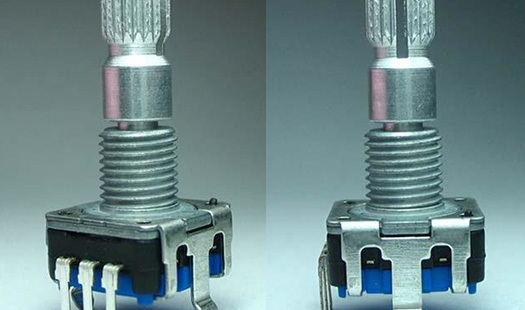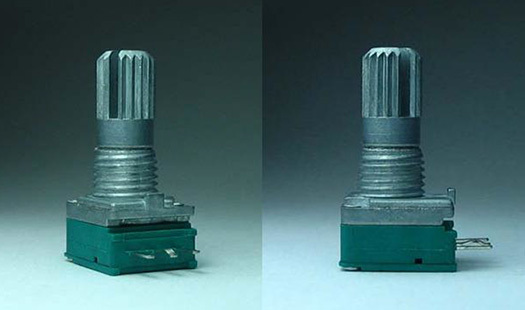Unlocking the Potential of the Newest RGB Potentiometer: A Comprehensive Guide
Oct 17,2025
Unlocking the Potential of the Newest RGB Potentiometer
Table of Contents
1. Introduction to RGB Potentiometers
2. What is an RGB Potentiometer?
3. How Does an RGB Potentiometer Work?
4. Applications of RGB Potentiometers in Modern Electronics
5. Advantages of Using RGB Potentiometers
6. Challenges and Limitations of RGB Potentiometers
7. The Future of RGB Potentiometers: Trends and
Unlocking the Potential of the Newest RGB Potentiometer
Table of Contents
- 1. Introduction to RGB Potentiometers
- 2. What is an RGB Potentiometer?
- 3. How Does an RGB Potentiometer Work?
- 4. Applications of RGB Potentiometers in Modern Electronics
- 5. Advantages of Using RGB Potentiometers
- 6. Challenges and Limitations of RGB Potentiometers
- 7. The Future of RGB Potentiometers: Trends and Innovations
- 8. Frequently Asked Questions (FAQs)
- 9. Conclusion
1. Introduction to RGB Potentiometers
The advent of technology has transformed many aspects of our lives, and the electronics industry is no exception. One of the most groundbreaking innovations in this field is the **RGB potentiometer**, which combines traditional potentiometer functionality with vibrant LED color control. This article aims to explore the mechanics, applications, and future potential of RGB potentiometers, unlocking their true potential for both hobbyists and professionals in electronics.
2. What is an RGB Potentiometer?
An **RGB potentiometer** is a variable resistor that allows users to adjust the resistance in a circuit while simultaneously controlling the color of an attached RGB (Red, Green, Blue) LED. By altering the resistance, users can fine-tune the brightness and color output of the LED, making it a versatile tool in various electronic applications. This device is particularly popular in projects that require dynamic lighting effects, custom color mixing, and user-friendly interfaces.
3. How Does an RGB Potentiometer Work?
To understand how an RGB potentiometer works, it is essential to break down its components and functionality.
3.1 Basic Components
An RGB potentiometer consists of three primary components:
- **Variable Resistor**: This allows for adjusting the resistance in the circuit.
- **RGB LED**: This emits light in various colors based on the voltage applied to it.
- **Control Circuit**: This circuit interprets the changes in resistance and adjusts the LED output accordingly.
3.2 Working Mechanism
When the user rotates the potentiometer, the resistance changes, which affects the current flowing into the RGB LED. Depending on the configuration, different voltage levels are applied to the red, green, and blue channels of the LED, mixing to produce a broad spectrum of colors. This functionality is further enhanced by integrating microcontrollers or programmable boards, allowing for more complex lighting patterns and effects.
4. Applications of RGB Potentiometers in Modern Electronics
RGB potentiometers find their place in a myriad of applications, ranging from simple DIY projects to sophisticated commercial products. Here are some common uses:
4.1 Home Automation and Lighting Systems
In smart home setups, RGB potentiometers can be utilized to control ambient lighting, allowing users to adjust brightness and color according to their mood or activity. This enhances the overall user experience and brings a touch of personalization to living spaces.
4.2 Gaming and Entertainment
RGB potentiometers are extensively used in gaming peripherals, such as keyboards and mice, to provide customizable lighting effects. Gamers can change colors and brightness levels to match their gaming setup or reflect their personal brand.
4.3 Automotive Lighting
In the automotive industry, RGB potentiometers can control interior and exterior lighting, allowing for customizable color schemes that enhance vehicle aesthetics and driver satisfaction.
4.4 Industrial Applications
In industrial settings, RGB potentiometers can be used in control panels to convey different operational states through color changes, improving safety and usability.
5. Advantages of Using RGB Potentiometers
The utilization of RGB potentiometers offers several benefits that make them an appealing choice for various applications:
5.1 Versatility
RGB potentiometers can be employed in numerous projects, including lighting control, color mixing, and user interfaces, thanks to their adaptable nature.
5.2 Enhanced User Experience
They provide users with a tactile and visual way to interact with electronic devices, allowing for personalized settings and an engaging experience.
5.3 Cost-Effective
Given their functionality and versatility, RGB potentiometers are relatively affordable. They offer an excellent return on investment for both hobbyists and professionals.
5.4 Compact Design
Their small size makes RGB potentiometers easy to integrate into various designs without requiring excessive space.
6. Challenges and Limitations of RGB Potentiometers
Despite their numerous advantages, RGB potentiometers are not without challenges and limitations:
6.1 Complexity in Design
Integrating RGB potentiometers into a design can be complex, especially when precise color control is needed. Users must consider the proper wiring and control circuitry.
6.2 Potential for Wear and Tear
Like all mechanical components, RGB potentiometers can wear out over time, especially with frequent use. This may lead to inconsistent performance or failure.
6.3 Compatibility Issues
Not all microcontrollers and circuits are compatible with RGB potentiometers. Users must ensure their designs can support these components before implementation.
7. The Future of RGB Potentiometers: Trends and Innovations
As technology continues to evolve, so too will the capabilities of RGB potentiometers. Here are some trends and innovations to watch for:
7.1 Smart Integration
With the rise of the Internet of Things (IoT), future RGB potentiometers may feature smart integration, allowing for remote control and automation via smartphone applications.
7.2 Improved Durability
Manufacturers are likely to focus on enhancing the durability and lifespan of RGB potentiometers, reducing wear and tear and improving reliability.
7.3 Advanced Customization Options
Future iterations may offer more advanced customization options, enabling users to create more intricate lighting effects and patterns.
8. Frequently Asked Questions (FAQs)
8.1 What is the difference between a traditional potentiometer and an RGB potentiometer?
A traditional potentiometer is used simply to adjust resistance, while an RGB potentiometer also controls the color output of an RGB LED.
8.2 Can I use an RGB potentiometer with any microcontroller?
Not all microcontrollers are compatible with RGB potentiometers. Check the specifications and capabilities of your microcontroller before integrating.
8.3 Are RGB potentiometers suitable for outdoor applications?
While they can be used in outdoor applications, it’s essential to ensure proper housing and protection against environmental conditions.
8.4 How can I program an RGB potentiometer for complex lighting effects?
To achieve complex lighting effects, you can use programmable microcontrollers, such as Arduino or Raspberry Pi, to control the RGB potentiometer's output dynamically.
8.5 Where can I purchase RGB potentiometers?
RGB potentiometers are widely available at electronics retailers, both online and in physical stores. Ensure that you choose a reputable supplier for quality components.
9. Conclusion
In conclusion, the **RGB potentiometer** stands at the intersection of functionality and creativity in the electronics world. Its ability to combine resistance adjustment with color control opens up a multitude of possibilities for both hobbyists and professionals. From enhancing user experiences in gaming and automotive applications to contributing to smart home automation, the potential applications are vast. As the technology continues to evolve, we anticipate even more innovative uses and improvements in design, making RGB potentiometers an essential component in the future of electronics. Embracing this technology today allows users to unlock a world of customization and creativity, pushing the boundaries of what’s possible in electronic design.
More Information
More Information
RECOMMENDED










